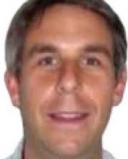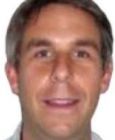Bad science is everywhere, from late night informercials to the worlds biggest drug companies. Fortunately, Dr Ben Goldacre has written a very entertaining book to help us identify the telltale signs.
I haven't posted for a while; I've been back in my native Britain for Christmas. My sister, knowing that I'm a miserable cynic and derive pleasure from the company of other cynics, gave me the book "Bad Science" for Christmas. I was very impressed with Bad Science, so much so that I am compelled to share my thoughts with you.
Bad Science is written by Dr Ben Goldacre, who has maintained a column by the same name in The Guardian (UK) newspaper for many years. I am aware of the column and have read it occasionally, although not for a few years. I remember it as a gentle analysis of news stories that misrepresented or manipulated science. The general message was "I think you'll find it's a bit more complicated than that".
Now, I find, Dr Goldacre is a much angrier man. The tipping point was apparently the controversy over the MMR (measles, mumps and rubella) vaccine, where bad research, a scientist with an agenda (Andrew Wakefield), poor political leadership (Tony Blair) and a hysterical media combined to produce a scare wherein the MMR vaccine was "linked" to autism. The link is nonsense (and the "evidence" is thoroughly reviewed in the finale to Bad Science), but hysteria still won't go away and vaccination rates have fallen.
The book, new this year, shows us that bad science is everywhere. Using numerous examples, we are shown how bad science is generated, it's effects amplified by the media and other non-scientists. We are shown the effects of bad science; it has, unfortunately, killed a lot of people. We are taught how to spot bad science, how to tease out the truth from the hyperbole and where to go for good science. The placebo effect is explained and quantified. Links are given for detailed information and articles on the bad science website; www.badscience.net
There is bad science everywhere, but certain purveyors come in for detailed criticism; homeopaths and "nutritionists" (in inverted comma's because, we learn, anyone can call themselves a "nutritionist" without training or expertise. Many people do). Homeopathy is carefully explained and systematically debunked.
Two individuals are also singled out; "Dr" Gillian McKeith and Professor Patrick Holford. McKeith describes herself as an "internationally acclaimed Holistic Nutritionist". She who has a large national TV audience in the UK where she peddles remedies for pretty much everything that ails the British public. However she no longer describes herself as a "Dr", after being exposed as a fraud by a badscience.net contributor. Professor Patrick Holford perpetuates fraud with a similar breadth and reach, so much so that there is an website dedicated to exposing it.
Many of you will never have heard of these people. I hadn't. This is perhaps the single notable weakness of the book; it's written for a British audience. These two charlatans are well known to the British public but less well known outside the country, although their stories are very entertaining and the lessons learned can be applied the world over. People like Holford and McKeith are ten-a-penny here in the US. A day spent with cable TV would give Goldacre enough for material for 10 follow up books. Or a nervous breakdown.
An oft repeated message is that the science one reads in the popular press is grossly distorted for the purpose of increasing readership. I knew this and I suspect you did as well, but the examples given are still breathtaking and depressing in equal measure. Perhaps most notable is the number of times science stories are covered by persons with no scientific training whatsoever (but maybe with a very respectable journalism degree). The bigger the story, the less likely a specialist science writer is to cover it. For those less familiar with science reporting, reading "Bad Science" will provide an education in what to look for in science stories that will set alarm bells ringing. For example, how many times have you heard scare stories where there has been a "50% increase in A Bad Disease following exposure to Something Previously Thought of as Harmless". Pulling back the hysteria and examining the facts often reveals that the 50% increase is from a small number to a slightly larger but still very small number. Such as 2 people to 3. Out of thousands. Be aware of percentages and look for real numbers! More importantly, look for proper statistical analysis. This too, is explained in simple, helpful terms.
It's not all bad, good science is out there in readily digestible forms and Goldacre directs us toward it. Special praise is given for the Cochrane Collaboration, a non profit that "produces and disseminates systematic reviews of healthcare interventions and promotes the search for evidence in the form of clinical trials and other studies of interventions". The Cochrane Collaboration has tackled many large and controversial issues, such as whether Vitamin C is effective in the prevention of colds (it isn't) or the treatment of colds (maybe). I was unaware of the existence of the Cochrane Collaboration before I read "Bad Science", but shall be using them extensively as a resource in the future.


